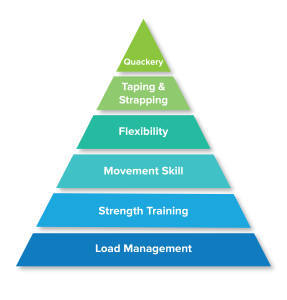Strength and conditioning in sport are more common place over time. The role of the strength and conditioning specialist becoming more important as athletes look to maximise their potential. This makes a lot of sense from when we considier the benefits of being a stronger athlete. A stronger athlete will, in most cases, never be anywhere tapping out their strength in a game situation. The conditioning side is about what is the appropriate type of work to be done. There is a lot to be gained from training the different energy systems but what ones are important. Knowing what aspects to train and where to place them are very important. There is no point in a marathon runner doing a Tabata session or a sprinter running for an hour. Plyometric drills that can of great benefit when used correctly for runners of all distances.
The use of strength training in running disciplines is pretty common in the sprints, 100 – 400m runners. When it comes to 800m and upwards the chances of training to get stronger and more powerful lessons significantly. Yet there is very definitely a place for progressive weight training in all runners programs from both a performance and injury prevention point of view.
With sprinters the advantages of using strength training are more obvious. We associate sprinters with being strong and powerful and sprinters are all, at the very least, powerful. With distance athletes the advantages aren’t quite as obvious. The qualites that the 10k or marathon runner is trying to develop are seemingly the opposite of that being developed in the gym.
There is no substitute for practising your sport be you a footballer or a runner. The practice of the sport should always be the primary focus and everything else is secondary to this. Having said that there are a couple of good reasons why you should be doing some sort of strength training in your program regardless of your event.
Injury Prevention
There is a large volume of research out there that shows that the inclusion of a properly structured strength training program reduces the chances of injury. An article in the BJSM showed that it’s inclusion in a training program reduced the injury rate to approximately 1/3 of those that didn’t use it.The paper concluded that;
“In general, physical activity was shown to effectively reduce sports injuries.Stretching proved no beneficial effect, whereas multiple exposure programmes, proprioception training, and strength training, in that order, showed a tendency towards increasing effect. Strength training reduced sports injuries to less than one-third. We advocate that multiple exposure interventions should be constructed on the basis of well-proven single exposures and that further research into single exposures, particularly strength training, remains crucial. Both acute and overuse injuries could be significantly reduced, overuse injuries by almost a half. Apart from a few outlying studies, consistently favourable estimates were obtained for all injury prevention measures except for stretching. ”
Adam Meakins, The Sports Physio, complied an injury reduction pyramid based around the factors that play the biggest role in helping reducing the chances of getting injured and placed strength training second after load management, that is not doing anything daft with your training like jumping from 10 to 50 miles a week or going crazy on the hill reps.
What happens when strength training
One of the things that happens when using heavy weight training is that the bones get stronger and thicker. This increase in bone density is great in terms of helping reduce the chances of stress fractures. As well as strengthening the muscles the heavy loads also create changes in the tendon attachments, thickening and strengthening them. This allows the muscle to exert more force without damaging the attachment area. A similar effect is ahd with the ligaments around the joints which is good news for trail runners. The nature of the terrain can mean that joints can suddenly and surprisingly be taken to end range. Therefore having thicker, stronger ligaments can prevent knee and ankle sprains.
Improved Performance
In a study by Karsten et al in May 2015 they took 16 moderately trained recreational runners and split the group in two. One half were given a strength training program to do alongside their running and the other half just ran. The program consisted of squats, RDL’s, calf raises and lunges. The group that did the weight training significantly improved their 5k time, ~45sec. In comparison to no change in the non weight training group. Both groups then carried out another 6 weeks of training without the strength training.
During this period most of the effects were lost when the resistance training was removed. If we expand upon the performance aspect of things getting stronger one of the big benefits for a distance runner is improved running economy. In other words, you can maintain a set pace with less effort. This study which was a meta analysis of 5 individual studies where the participants had been high level competitive middle and long distance runners found an increase of 2.32 mL/kg/min in VO2 max or about 3-4%, not insignificant when you consider these were well trained, experienced runners.
So how do you fit it all together?
Through the winter you put in two solid sessions a week which cover the whole body. The slpit would look like day 1; squat, press and row variation and Day 2 deadlift, press and pullup variation. Then inseason you switch to an upper body only and full body session. Or, alternatively, keep to two full body sessions but reduce the volume of work. Both of these options reduce the amount of fatigue so as to not have an adverse effect of any events. If training with a coach it can be possible to maintain the work at higher levels. This is beacuse the program can be tailored to fit with any competitions you hvae planned. Training can be kept at as high an intensity and volume for as long as appropriate before then tapered off prior to race day.
In terms of progressions these are the steps I take people through on the squat and press. On the squat we go from goblet squats to front squats to back squats. The goblet squat really helps nail down the squatting pattern and we can then start to add weight with the front squat. The front squat also helps develop a strong upright postion that will carry over well into the back squat where we can go a bit heavier.
When pressing we start on planks and move to press ups then onto bench press. These aren’t exhaustive but lay a solid foundation for any other pressing exercises.
If you would like to enquire about an appointment then click HERE or to speak to us HERE to arrange a phone call.



